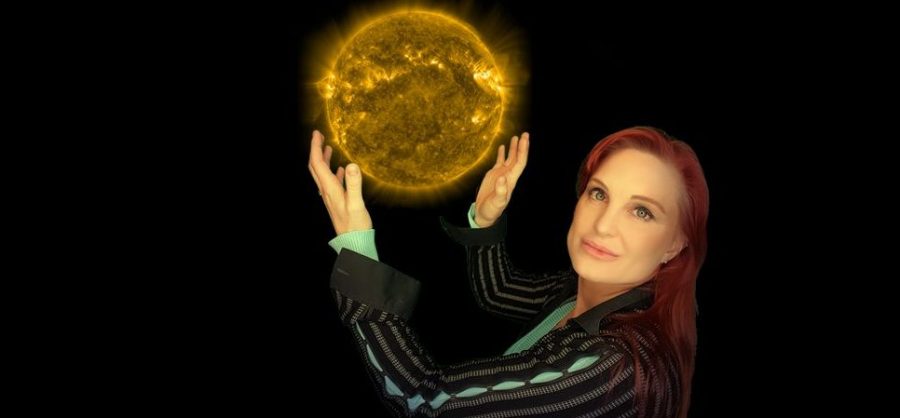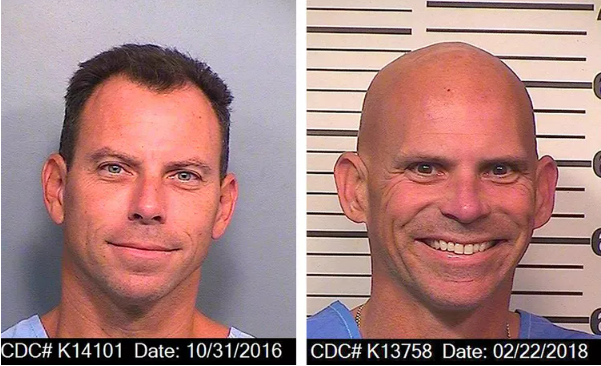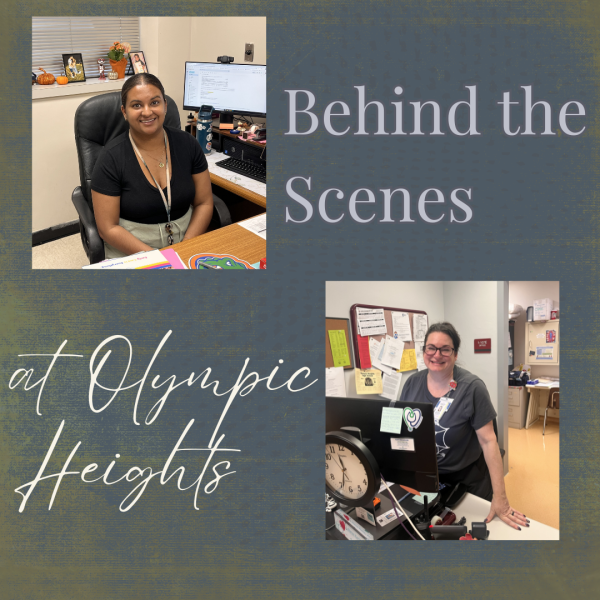Women have a long and unappreciated history of contributions to the STEM fields; space weather forecaster Tamitha Skov speaks of her experiences
Tamatha Skov, a space weather forecaster who works primarily in the fields of solar and space physics research and in the testing of spacecraft materials in realistic space radiation environments, is a leader in the STEM field and is interviewed by The Torch for this feature.
As humans gain more understanding of the world in which they live, the field of science continues to make advancements, one step at a time. One of such developments is the rising number of women in STEM (Science, Technology, Engineering, Mathematics) related careers.
The number of women working in computer/mathematical sciences virtually doubled between the years 1993 and 2010, according to the National Science Foundation. Additionally, the amount of women in biological /environmental /agricultural sciences has also increased, rising from 34 percent to 48.2 percent.
What helped to encourage these trends? What inspired the women of today to chase their dreams and defy the odds?
The following women broke gender stereotypes and pioneered the way for both scientific and social movements, one mind-changing discovery at a time.
Readers can also access an e-mail interview The Torch conducted with credentialed space weather forecaster Tamitha Skov (featured below) here. Skov has been helping the public understand the effects of Space Weather since 2013. She works primarily in the fields of solar and space physics research and in the testing of spacecraft materials in realistic space radiation environments.
Ada Lovelace (1815-1852)
Ada Lovelace, the daughter of renowned poet Lord Byron, is considered to be the first computer programmer. She was asked to translate an article on Charles Babbage’s Analytical Machine into English; however, she not only accomplished that task, but she also added her own ideas and beliefs about the machine.
In her notes, Lovelace elaborated how codes could be formulated for the device so it would be able to handle letters and symbols as well as numbers. She also theorized a process by which an engine could repeat a series of instructions, a technique known as looping that computer programs continue to use today.
Elizabeth Blackwell (1821-1910)
Defying the barriers of sex, Elizabeth Blackwell became the first woman in the United States to ever receive a medical degree.To encourage the growth of female physicians, who would otherwise be denied internships, she established the New York Infirmary in 1857.
Her path to receiving her degree was an intriguing one, however. She applied to multiple colleges, and was accepted by Geneva Medical College in western New York in 1847. In spite of that, the faculty accepted her because they assumed that the all-male student body would never all agree to allow a woman to join the college. In fact, the school allowed the male students to vote on her admission. As a joke, they voted “yes,” and she was admitted.
Nettie Stevens (1861-1912)
Nettie Stevens, an early American geneticist, discovered what scientists know now as sex chromosomes in 1906. With an experiment utilizing male beetles, she ascertained that the beetles of the male sex produce two kinds of sperm, one with a large chromosome and one with a small chromosome. Thus, the X and Y sex chromosomes (although the naming of the chromosomes would be labeled at a later date).
When Stevens mated the male beetles, she uncovered that the sperm with the larger chromosome (X) resulted in a female fertilized egg, and the sperm with the smaller chromosome (Y) produced male offspring. Unfortunately, a man by the name of E.B. Wilson was simultaneously researching the same issue, and they both published their findings around the same time. Since he was a more established scholar at the time, he received the recognition for discovering sex chromosomes.
Marie Curie (1867-1934)
Marie Curie became the first woman to receive the Nobel Prize, as well as the first person – both man or woman – to be awarded it twice. Alongside her husband Pierre Curie, she discovered the elements polonium and radium. After her husband’s death, she advocated the use of X-rays by inventing the first “radiological car” a movable mechanism which contained an X-ray machine with photographic darkroom equipment. As a matter of fact, these machines were used during World War I, where they could be driven up to the battle ground, and war surgeons could use the X-rays to aid them in their surgeries.
Rachel Carson (1907-1964)
Rachel Carson spawned the global environmental movement with her 1962 book Silent Spring. This marine biologist, conservationist, and author released an exposé outlining the dangers of chemical pesticides, which received nationwide attention and led to the U.S. ban of DDT and other harmful pesticides. Her work sparked the creation of the U.S. Environmental Protection Agency (EPA) as well as clean air and water laws, such as the Clean Air Act of 1963.
Rosalind Franklin (1920-1958)
A name you’ll probably recall from your biology class, Rosalind Franklin was an English chemist and X-ray crystallographer known for her role in the discovery of the structure of DNA.
Using the technique of X-ray diffraction, she created photographs of the structure of DNA. However, despite her hard and diligent work, she did not receive the credit she deserved until long after her death. This was because she had a personal conflict with another scientist, Maurice Wilkins, who ended up disclosing one of her DNA pictures (Photo 51) to competing scientists James Watson and Francis Crick without her permission or knowledge. Watson and Crick would use what they saw in Photo 51 to formulate their own DNA model for which they would later receive a Nobel Prize for in 1962. Franklin lived a short, but significant life, dying of ovarian cancer at the age of 37.
Katherine Johnson (1918-)
The mind-blowing African-American woman behind the blockbuster film Hidden Figures, NASA scientist Katherine Johnson alongside her female companions, calculated the trajectory for several space missions, including the space flight for Alan Shepard (the first American in space), and the path for the 1968 Apollo 11 flight to the moon. She received the Presidential Medal of Freedom in 2015, and surprisingly is still alive today at 101 years old!
Tamitha Skov
Dr. Tamitha Skov serves as a role model for the rising women entering science fields. She holds two bachelor of science degrees in physics and physical chemistry, as well as a masters of science degree and a PhD in geophysics and planetary physics from the University of California at Los Angeles (UCLA). In 2004 she joined The Aerospace Corporation in Los Angeles where she is currently a Research Scientist in the Physical Sciences Laboratory. Skov works primarily in the fields of solar and space physics research and in the testing of spacecraft materials in realistic space radiation environments. She is an instructor at The Aerospace Institute and has served as an audio forensics analyst and instructor for the National Law Enforcement and Corrections Technology Center (NLECTC), funded by the Department of Justice. She has published over 60 peer-reviewed scientific and technical papers in the literature. One of her major contributions to Space Weather was discovering the role the Sun’s magnetic field plays in how solar storms are formed and cause havoc at Earth.
Her forecasting work as the “Space Weather Woman” is widely known on social media such as YouTube, Twitter, and Facebook. Skov has been featured in Popular Science Magazine and the MIT Technology Review Journal as well as on television shows for The Weather Channel and The History Channel. As for her opinion on the increasing role of women in science, Skov reveals to The Torch, “Honestly I think it’s been a long time coming. Women have a much steeper hill to climb when it comes to being taken seriously in any facet of science, but especially in the physical sciences.”
The Torch had the opportunity to pose some questions to Skov via email. In her responses, Skov elaborates on the difficulties she and other females have faced in the STEM fields. That interview can be read here.
Christina Koch and Jessica Meir
These two NASA astronauts just recently conducted the first ever all-female spacewalk. Before this, the 227 spacewalkers who have traversed the abyss of space since 1965 have all included a male astronaut or cosmonaut.
In a former interview, Koch spoke about the significance of her spacewalk, saying, “I think it’s important because of the historical nature of what we’re doing.” Additionally, in another record-breaking moment for women, Koch is slated to secure the longest single spaceflight by a woman, having an expected total of 328 days in space.
Cynthia Kenyon
Do you think humans will ever be able to live forever? Molecular biologist Cynthia Kenyon may have the answer. Over two and a half decades ago, Kenyon performed genetic studies utilizing C. elegan worms and mice to show if human life might be able to live longer. She discovered that a daf2 hormone receptor mutation resulted in a doubling of the worms’ and mice’s lifespan. Currently working with Google’s Calico, she works to lengthen the lives of humans by 100 years, making her truly a motivational woman of today.
With these women as inspirations for future endeavors, may the number of women employed in STEM fields only increase. As American actress and neuroscientist Mayim Bialik (who played Amy Fowler on The Big Bang Theory) explains, “Science is for everyone.”
Girls should also heed Skov’s words into close consideration: “Don’t let anyone tell you, you don’t belong here.”











